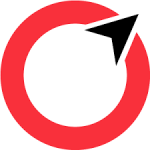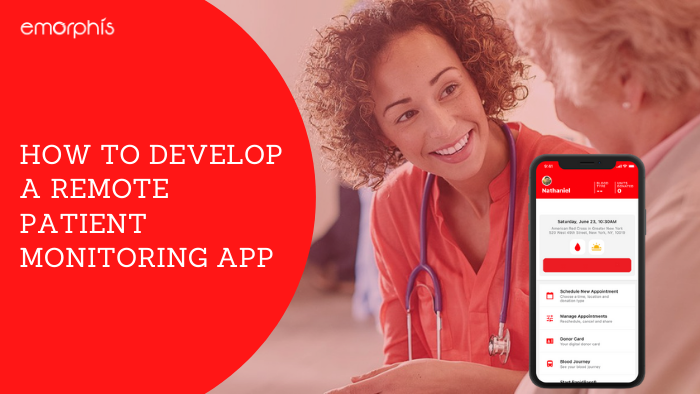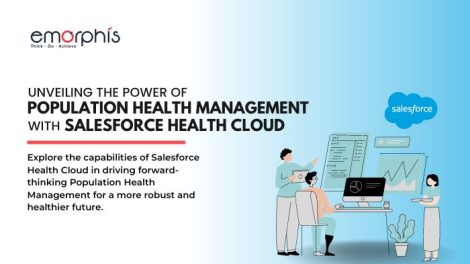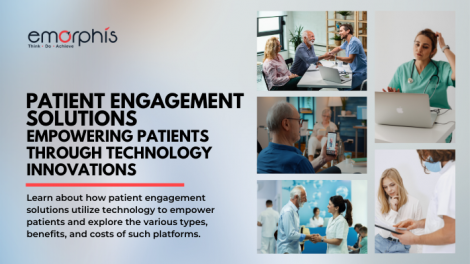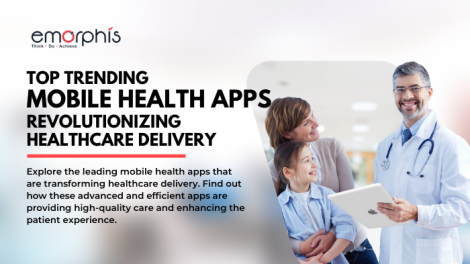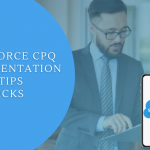In recent times, the healthcare industry has faced several issues due to the constant mayhem caused by the COVID-19 pandemic. In such a scenario, getting access to good-quality medical facilities has become too difficult. Medical fields are getting plagued by demand and supply constraints. Moreover, the collection of patient data is not so easy now. This is where telemedicine solutions, telehealth applications, and Remote Patient Monitoring solutions have been the key digital solutions. In fact, they are helping many access good-quality medical facilities
The pandemic has disrupted the way of conducting the monitoring of patients traditionally. One notable example is the struggle to keep observation of patients admitted to hospitals where infection rates are high. Furthermore, patients also might fear staying there for a longer duration because of the risk associated with catching coronavirus. This is where the role of remote patient monitoring (RPM) comes in.

What is Remote Patient Monitoring?
It is a process of managing the health conditions of patients suffering from acute (or chronic) illness via monitoring devices. Further, it is connected to telemedicine solutions, telehealth solutions, or healthcare software solutions. In fact, collecting and sending vital health-related data safely and securely to Healthcare providers.
Currently, more than 80% of hospitals across the USA are investing in RPM technologies. Further, it is to offer healthcare app solutions to patients who are old, unstable, and at high risk of infections. Now, with the arrival of RPM apps, it has become easy for doctors to keep track of the health conditions of their patients remotely.
So, the fear of staying away from hospitals due to coronavirus lurking around has made RPM app development a viable option for patients. The given blog will help showcase the importance of RPA apps in the healthcare industry. Also, how it is essential to take the health sector to a great height.
Remote Patient Monitoring Revolution of 2020
Due to the current COVID-19 pandemic, every industry has been bitten into the dust except the healthcare industry. Though healthcare is the need of the hour, it has offered a great opportunity for RPM technology to display its capability.
It is evident from the fact that the value of healthcare software development has now been valued at about $250 billion and is happening all thanks to RPM solutions development. Since the crisis in the middle of 2020, all healthcare service providers (both public and private) have been in constant search of a strategy to improve their medical facilities, and have stopped at RPM apps.
Interesting Facts about Remote Patient Monitoring Apps
There are some interesting facts about RPM apps happening in the world post-COVID:
- RPM technologies will grow at the rate of 25% to 30% in the upcoming years in the telehealth market of the USA
- The RPM apps will be utilized for treating patients with acute healthcare conditions besides those with chronic conditions
- RPM technologies in the healthcare market will cross more than $1 billion in five years from the current $117 million
Though it is difficult to get access to accurate statistics, there has been a tremendous increase in the application for RPM. And it all started with the attack of coronavirus at the beginning of 2020. So, the takeaway from the given fact is that RPM will become a long-term prospect for health professionals even after the end of the COVID-19 pandemic in the near future.
Read a Comprehensive Guide for healthcare software solutions.
Types of Remote Patient Monitoring Apps
The main objective of RPM app development is to collaborate with patients and doctors together so that the former can avail better medical advice than the latter using the same healthcare app. There are some of the most common types of RPM app solutions are listed below.
Types of RPM app solutions
- IoT Medical Applications: They help in gathering health data from healthcare trackers and smart sensors and provide them to doctors. A notable example is HIPAA-compliant video conferencing
- Questionnaires-based Apps: Such Remote Patient Monitoring apps collect health-related information from the patients by asking a series of questions and are the most simple online health solutions
- Telehealth Software: Telemedicine app development or Telehealth RPM offers video calls for doctors to have a medical examination of their patients as per their comfort. Some examples are JotForm, Medtronics, etc.
- Precise Medical Solution App: These Remote Patient Monitoring programs are used by doctors to collect health data from patients exclusively for research purposes. An example is the Apple Watch series app
Key Features of Your Remote Patient Monitoring App
Before pondering on some of the crucial aspects of the RPM apps, one has to find out a few strategies that should be part of the features of such apps including:
- The precise way of collecting data from the patients
- Procedure to present the vital data from patients to healthcare providers
- Focus on enhancing the doctor-patient relations
- Successful creating an interface with patients
So keeping all the above-given aspects in mind, we have noted the basic features that should be present in RPM apps.
Features of Remote Patient Monitoring Apps
- Presence of remote consultations through secure video service (like Zoom)
- Availability of 2-way messaging and real-time chat between doctors & patients
- Successful integration of patients’ data with hospitals through a secure API
- Availability & support for numerous payment options
- Appointment notifications with an option for a reminder
- Preventive care features make interaction for a patient with acute illness easy
- The option of a health graph for patients to display illness symptoms to doctors regularly
Connect with Emorphis Technologies for Remote Patient Monitoring Software Development.
Top 4 Remote Patient Monitoring Applications on the Market
I. Hale Health
It is one of the powerful RPM applications that is known for delivering instant remote care with great efficacy and having a successful connection with patients that needs intervention. This comprises notable medical sensors for consumer and clinical services. It comes with notable features like video calls & visits, patient engagement tools, remote monitoring tools, automated programs, and many more.
II. Qardio
It is an important Remote Patient Monitoring tool that suits those patients who have cardiovascular illness, weight issues, and high blood pressure. With wide support on platforms such as Apple and Android, it acts as a sense of delight for doctors to get efficient patient information for seamless integration with EHR. It includes tools such as Qardioarm (remote blood pressure monitor), Qardiocore (medical-grade ECG), Qardiobase 2 (remote weight management), and so on.
III. Chronic Watch
It is a mobile-based chronic care management tool that comes as a software package (available on Android, desktop, and iOS) for offering personalized care plans for those patients suffering from two or more chronic illnesses via their remote locations. It offers virtual visits, data sharing, and multi-way communication facilities to both doctors and patients on its portals.
IV. Healtharc
It is a one-stop solution offered by healthcare application development companies to health practitioners for easy and efficient monitoring of their patients remotely. It works comfortably on a cloud platform and smartphone apps. This comes with some exclusive features, such as simple billing through mobile payment monitoring devices and EHR integrations.
RPM Development Process
Like developing an app for a product, the RPM telehealth app is also a carefully planned procedure that follows various steps to ensure the best healthcare app solution to help organizations succeed in the best possible way.
A. The first Step Commence with Rapid Prototyping
If one wants to prepare to code for their apps, then they should be ready to spend a lump-sum amount. Instead of trying all sorts of things to create an app with untested features and interfaces, it will be better to create a well-planned prototype that will allow users to test it and also include necessary changes.
Since the prototype of the app works easily on one’s smartphone with the availability of regular updates, there is an assurance to the developers to meet the requirements of the users (patients and health professionals in the given case). In this way, the companies will be able to save a large amount of cost that otherwise would have been spent on app development.
B. Development of Web Applications for Doctors (& other Health Professionals)
In the case of the healthcare sector, the web application designed for them must be capable of storing all the vital health-related data from the patients that can be used appropriately by health professionals. Furthermore, a notification is sent to them when patients have filled up all the logs related to their disease, so it will allow physicians to track them.
Thus, the creation of an easy healthcare web application will be beneficial for doctors to navigate their patients for routine check-ups from remote locations.
C. Building Up of Mobile Applications for Usage by Patients
In parallel with designing a web application, it’s another procedure of custom development also goes hand in hand. It is without a doubt an inseparable aspect because there should be a tight-knit integration that will hold them together successfully.
Moreover, the developers of the Remote Patient Monitoring apps must make their devices UI/UX friendly not only for smartphones but also for tablets. In this way, the patient can get access to better healthcare updates and interact with their doctors in the best possible manner.
D. Don’t Forget to Follow Security Guidelines
Not only developing but integrating security systems is also a must for the efficient working of RPM apps. Some standards are a must for the RPM solution and include:
- SOC2 Type2
- ISO27001
Also, it is crucial for RPM apps to offer protected health updates (or information) with the following practices:
- Ensuring secure net connections that must start with HTTPS:
- The procedure of data encryption at synchronization and also at rest
- Implementation of 2-factor authentication security standards
D. Telemedicine App Development with Testing & Deploying to Production
After developing the RPA apps for both web and mobile, it is time to perform testing to identify and remove bugs. After the testing is done, deploy it to the production scenario at the app stores of different devices successfully.

The Last Thought
Hopefully, Remote Patient Monitoring app development services will be the future that is long suggested by health experts. They will be beneficial not only for doctors but also equally advantageous for medical researchers and patients. Therefore, the given concept will help in making the full switch to remote health monitoring after a pandemic a real one, and that too successfully.
Contact us for custom healthcare software development.


